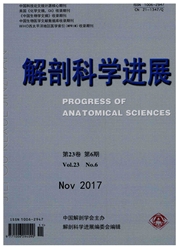

 中文摘要:
中文摘要:
退行性下颈椎不稳是指保持稳定的相关结构因退变导致功能减退,致使下颈椎在生理负荷下即出现过度和异常活动,引起颈肩部不适、活动受限,甚至发生颈椎畸形和神经损害症状。退变过程可分为退变早期、失代偿期和畸形稳定期,椎间盘的退变在其中起着起始和促进作用。该病的诊断主要通过临床症状和颈椎动力位X线片。病程初期多推荐保守治疗,对正规治疗无效的患者可采取手术治疗,术后症状多数可得到改善。本文综述了退行性下颈椎不稳的发病机理、影像学评估、诊断和治疗方法。
 英文摘要:
英文摘要:
Degenerative cervical instability refers to the excessive and abnormal activities of lower cervical vertebrae in physiological load caused by degenerative stability losing, which leads to neck and shoulder discomfort, activity restricted, even cervical spine deformity and nerve damage symptoms. Degeneration process could be divided into three stages:early degeneration, decompensation and deformation.The intervertebral disc degeneration performs the starting and promoting role.The diagnosis mainly depends on cervical dynamic flexion extension X-ray radiographs and clinical symptoms. In early state, conservative treatment is recommended, the ones who failed can get significantly improvement from surgical treatment. In this paper,we reviewed the pathogenesis,imageological diagnosis and treatment of degenerative lower cervical instability.
 同期刊论文项目
同期刊论文项目
 同项目期刊论文
同项目期刊论文
 期刊信息
期刊信息
